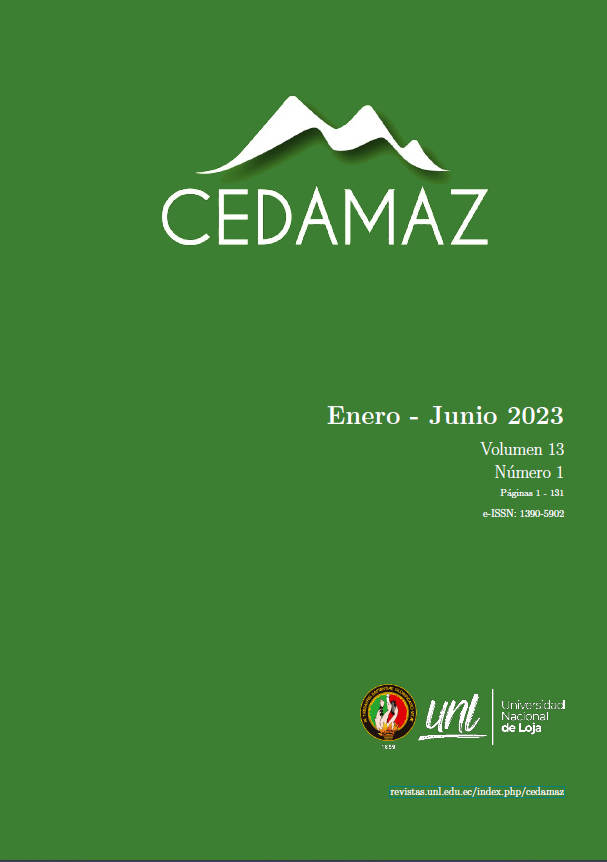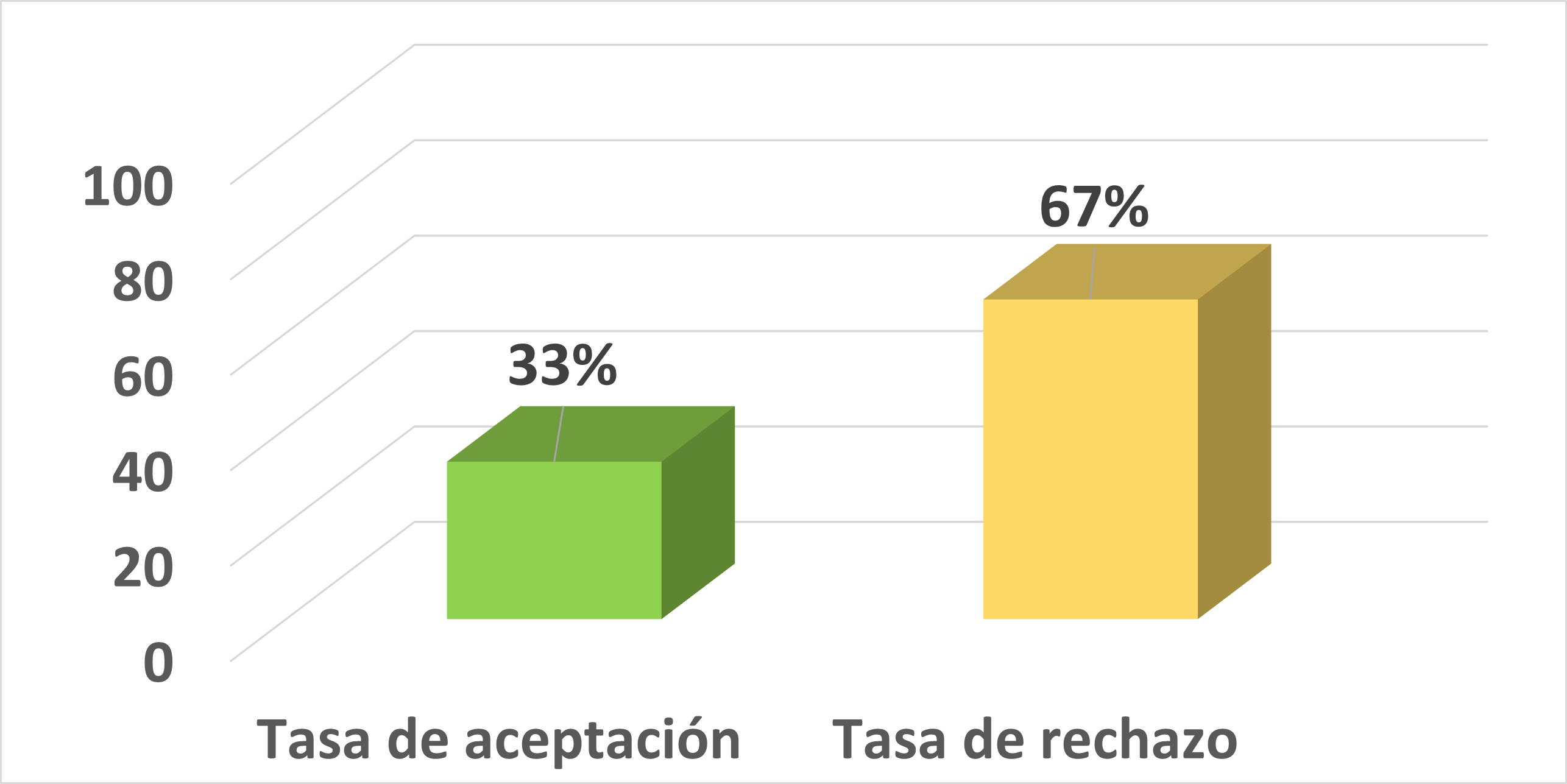Development a soluble antioxidant beverage of tree tomato (Solanum betacea) for sportsmen
DOI:
https://doi.org/10.54753/cedamaz.v13i1.1721Keywords:
Solanum betacea, Moisturizing powder, Antioxidant, Sportsmen, Spray dryingAbstract
Athletes require specific hydration that contains antioxidants in addition to carbohydrates and electrolytes, because the tree tomato (Solanum betacea) is rich in antioxidants, the objective of the present study was the elaboration of a hydrating drink in tree tomato powder for athletes. The pulp was chemically and nutritionally characterized and then treated with an enzymatic cocktail to increase dissolved solids. To define the pulp spray drying conditions, the following variables were tested: feed flow (12 and 17 mL/min); drying temperature (130, 140, 150 and 180 °C); maltodextrin concentration (3, 7 and 9%) and the best drying condition was selected by sensory analysis. The fruit was processed and formulated of the hydrating drink powder, in which solubility, process effectiveness, sensory characteristics and polyphenol content were analyzed. The optimum drying conditions were drying temperature of 140 °C, feed flow of 12 mL/min, and addition of maltodextrin at 9%; tricalcium phosphate was added at 100 ppm to improve effectiveness. The dehydrated pulp contained a high content of β-carotenes, minerals, polyphenols and antioxidants. The product formulation contained 37.47% pulp providing 120 mg of polyphenols per-100 g of product. It was packed in a 40 g trilaminate to prepare 600 mL. Finally, the product stability study (16.7 °C and 67-80% relative humidity) for three months showed a shelf life of one year.References
Acosta-Quezada, P. G., Raigón, M. D., Riofrío-Cuenca, T., García-Martínez, M. D., Plazas, M., Burneo, J. I., Figueroa, J. G., Vilanova, S., & Prohens, J. (2015). Diversity for chemical composition in a collection of different varietal types of tree tomato (Solanum betaceum Cav.), an Andean exotic fruit. Food Chemistry, 169, 327–335. https://doi.org/10.1016/j.foodchem.2014.07.152
Ali Hassan, S. H., & Abu Bakar, M. F. (2013). Antioxidative and anticholinesterase activity of Cyphomandra betacea fruit. The Scientific World Journal, 2013.
Alves, A., Caeiro, A., Correia, S. I., Veríssimo, P., & Canhoto, J. (2017). Establishment and biochemical characterization of tamarillo (Solanum betaceum Cav.) embryogenic cell suspension cultures. In Vitro Cellular & Developmental Biology - Plant 2017 53:6, 53(6), 606–618. https://doi.org/10.1007/S11627-017-9864-Z
Anzaldúa, A. (1994). La evaluación sensorial de los alimentos en la teoría y la práctica. In Acribia.
AOAC. (2007). Official methods of analysis of AOAC International. (W. Horwitz (ed.); 18th Editi). Gaithersburg (Maryland): AOAC International.
Castro, N. L. M., Fernández, M. C., Carpio, E. R. V., Coello, W. M. E., & Bravo, V. P. B. (2022). Diseño de una bebida a base de Solanum betaceum Cav.(tomate de árbol) y cascarilla de Theobroma cacao L (cacao). CIENCIA UNEMI, 15(40), 122–132.
Chamba Vaca, J. P. (2018). Caracterización molecular de un grupo de segregantes y de cuatro variedades comerciales de tomate de árbol Solanum betaceum [Universidad Central del Ecuador]. http://www.dspace.uce.edu.ec/bitstream/25000/16478/1/T-UCE-0001-CAG-023.pdf
DECAB. (2004a). Método modificado del Manual de la Columna ASTEC NH2 series de Advanced Separation Technologies Inc.
DECAB. (2004b). Método modificado y validado por el DECAB del artículo: Macrae, R., 1988, “HPLC in food analysis” (Segunda Ed). Academic Press.
Dillwyn, S., Kulastic, J. A., Pragalyaashree, M., & Tiroutchelvame, D. (2022). Impact of Drying Methods on the Quality of Bioactive Components in Tree Tomato (Cyphomandra betacae). Trends in Sciences, 19(2), 2060. https://doi.org/10.48048/tis.2022.2060
Feye, A. S. P. (2018). Composición de las bebidas deportivas. Revista Universitaria de La Educación Física y El Deporte, 11, 45–53.
Hart, F. L., & Fisher, H. J. (1991). Análisis moderno de alimentos. In Zaragoza, España: Acribia.
Herrera Campos, S. L. (2018). Efecto de la concentración de goma arábiga y temperatura de aire de secado por aspersión en el contenido de carotenoides totales, vitamina C y actividad antioxidante de la pulpa de tomate de árbol (Cyphomandra betacea de solanum betaceum) [Universidad Nacional del Centro del Perú]. https://repositorio.uncp.edu.pe/bitstream/handle/20.500.12894/4373/Herrera C.pdf?sequence=1&isAllowed=y
INEN. (2015). NTE INEN 1909: FRUTAS FRESCAS. TOMATE DE ÁRBOL. REQUISITOS. https://www.normalizacion.gob.ec/buzon/normas/nte_inen_1909_2r.pdf
Márquez, C. J., Otero, C. M., Rojano, B. A., & Osorio, J. A. (2017). Actividad antioxidante y concentración de compuestos fenólicos del tomate de árbol (cyphomandra betacea s.) en poscosecha.
Miravet Valero, G. M. (2009). Secado por atomización de zumo de granada. Univerisdad Politecnica de Cartagena.
Moghbeli, S., Jafari, S. M., Maghsoudlou, Y., & Dehnad, D. (2019). Influence of pectin-whey protein complexes and surfactant on the yield and microstructural properties of date powder produced by spray drying. Journal of Food Engineering, 242, 124–132.
Morillas-Ruiz, J. M., & Delgado-Alarcón, J. M. (2012). Análisis nutricional de alimentos vegetales con diferentes orígenes: Evaluación de capacidad antioxidante y compuestos fenólicos totales. Nutr. Clín. Diet. Hosp, 32(2), 8–20.
Olivos, O. C., Cuevas, M. A., Álvarez, V. V., & Jorquera, A. C. (2012). Nutrición para el entrenamiento y la competición. Revista Médica Clínica Las Condes, 23(3), 253–261.
Pérez, A. G., Olías, R., Espada, J., Olías, J. M., & Sanz, C. (1997). Rapid determination of sugars, nonvolatile acids, and ascorbic acid in strawberry and other fruits. Journal of Agricultural and Food Chemistry, 45(9), 3545–3549.
Re, R., Pellegrini, N., Proteggente, A., Pannala, A., Yang, M., & Rice-Evans, C. (1999). Antioxidant activity applying an improved ABTS radical cation decolorization assay. Free Radical Biology and Medicine, 26(9–10), 1231–1237.
Revelo Moran, J. A., Alarcon, E. Y. P., & Alvarez, M. V. M. (2004). Manual Guia de Capacitacion del Cultivo Ecologico de Tomate de Arbol en Ecuador. INIAP Archivo Historico.
Reyes-García, V., Totosaus, A., Pérez-Chabela, L., Juárez, Z. N., Cardoso-Ugarte, G. A., & Pérez-Armendáriz, B. (2021). Exploration of the potential bioactive molecules of tamarillo (Cyphomandra betacea): Antioxidant properties and prebiotic index. Applied Sciences (Switzerland), 11(23). https://doi.org/10.3390/app112311322
Rodríguez-Sandoval, E., Lascano, A., & Sandoval, G. (2012). Influence of the partial substitution of wheat flour for quinoa and potato flour on the thermomechanical and breadmaking properties of dough. Revista UDCA Actualidad & Divulgación Científica, 15(1), 199–207.
Ruales, J., Carpio, C., SantaCruz, S., Santacruz, P., & Bravo, J. (2000). Manual de métodos de caracterización de carbohidratos. Departamento de Ciencia de Alimentos y Biotecnología. Escuela Politécnica Nacional.
Siddick, S. A., & Ganesh, S. (2016). Spray drying technology for producing fruit powders from tomatoes and tamarillo. In Acta Horticulturae (Vol. 1120). https://doi.org/10.17660/ActaHortic.2016.1120.52
Slinkard, K., & Singleton, V. L. (1977). Total phenol analysis: automation and comparison with manual methods. American Journal of Enology and Viticulture, 28(1), 49–55.
Torres, A. (2012). Caracterización física, química y compuestos bioactivos de pulpa madura de tomate de árbol (Cyphomandra betacea)(Cav.) Sendtn. Archivos Latinoamericanos de Nutrición, 62(4), 381–388.
Urdampilleta, A, Martínez-Sanz, J. M., Julia-Sanchez, S., & Álvarez-Herms, J. (2013). Protocolo de hidratación antes, durante y después de la actividad físico-deportiva. Motricidad. European Journal of Human Movement, 31, 57–76.
Urdampilleta, Aritz, Armentia, I., Gómez-Zorita, S., Martínez Sanz, J. M., & Mielgo-Ayuso, J. (2015). La fatiga muscular en los deportistas: métodos físicos, nutricionales y farmacológicos para combatirla. Archivos de Medicina Del Deporte, 32(1), 36–46. https://rua.ua.es/dspace/bitstream/10045/49766/1/2015_Urdampilleta_etal_ArchMedDeporte.pdf
Zhao, X., Zhang, C., Guigas, C., Ma, Y., Corrales, M., Tauscher, B., & Hu, X. (2009). Composition, antimicrobial activity, and antiproliferative capacity of anthocyanin extracts of purple corn (Zea mays L.) from China. European Food Research and Technology, 228(5), 759–765.
Published
How to Cite
Issue
Section
License
Copyright (c) 2023 CEDAMAZ

This work is licensed under a Creative Commons Attribution-NonCommercial-NoDerivatives 4.0 International License.
Those authors who have publications with this journal, accept the following terms:
- After the scientific article is accepted for publication, the author agrees to transfer the rights of the first publication to the CEDAMAZ Journal, but the authors retain the copyright. The total or partial reproduction of the published texts is allowed as long as it is not for profit. When the total or partial reproduction of scientific articles accepted and published in the CEDAMAZ Journal is carried out, the complete source and the electronic address of the publication must be cited.
- Scientific articles accepted and published in the CEDAMAZ journal may be deposited by the authors in their entirety in any repository without commercial purposes.
- Authors should not distribute accepted scientific articles that have not yet been officially published by CEDAMAZ. Failure to comply with this rule will result in the rejection of the scientific article.
- The publication of your work will be simultaneously subject to the Attribution-NonCommercial-NoDerivatives 4.0 International (CC BY-NC-ND 4.0)









